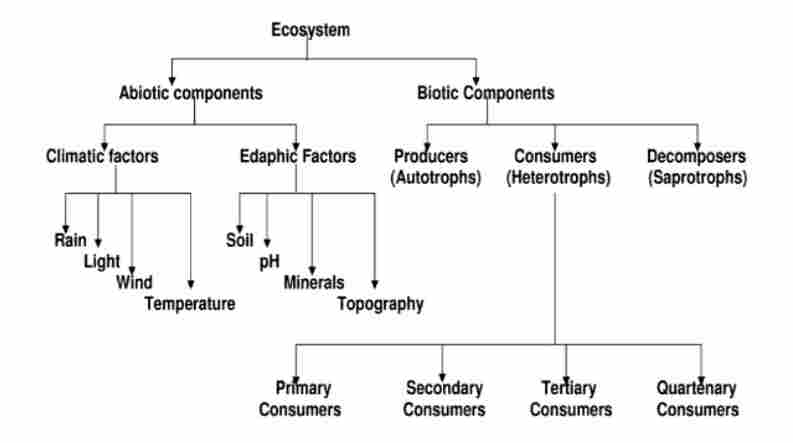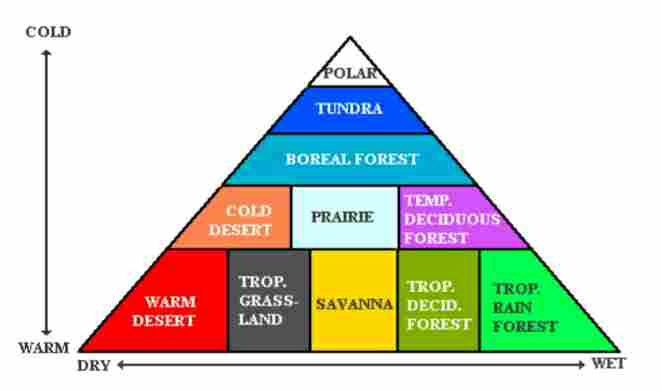Levels of Organization in Ecology
Environment:
• The term ‘Environment’ means surroundings in which the organisms live.
• It is the sum total of all Biotic (living-plants, animals, decomposers etc ) and Abiotic (Non-living - energy, radiation, temperature etc ) factors that surround and potentially influence an organism.
Ecology:
• Ecology is defined “as a scientific study of the relationship of the living organisms with each other and with their environment.”
The various ecological levels of organisation are described below:
Individual
- An individual organism is a distinct unit of life in nature. It is the basic unit of ecological hierarchy.
- Ex: Plant, Animal, Bacteria.
Population
- It is a group of individuals of a plant or animal species inhabiting a given area at a particular time.
- Ex: All the frogs living in a pond constitute a population.
Community
- It is an assemblage of populations of plants, animals, bacteria, and fungi that live in an area that show interaction and interdependence.
- Ex : A gross land community dominated by grasses, it may contain herbs,shrubs, and trees along with associated animals of different species.
Ecosystem
- It is defined as structural and functional unit of biosphere consisting of living beings and physical environment, both interacting and exchanging materials between them.
- Biological community + physical environment ——> (exchange of energy and recycling of nutrients) —>ecosystem.
- Eco system with higher biodiversity tends to be more stable, they can self-regulate themselves known as homeostasis.
Components of Ecosystem
Ecotone:
- Is a zone of junction/transition between two or more diverse ecosystems.
- Ex: Mangrove ecosystem is Ecotone between Forest and River ecosystem, Estuaries are ecotone between salt and freshwater ecosystem, and grassland is an ecotone between forest and desert ecosystem.
Characteristics of Ecotone:
- Zone of transition: It has the condition intermediate to the adjacent ecosystem.
- May contain organisms which are entirely different from that of adjoining communities.
- Edge effect: Sometimes the number of species and the population density of some of the species is much greater in size than the adjoining community.
Ecological Niche:
- A population of each species within a community has a separate ecological niche. No two species within a given community can have exactly the same niche and live permanently together.
- If two species happen to have the same niche in a community either of the two may happen, A direct competition between the two will eliminate one of them. It is called competitive exclusion. OR they may adapt differently in a way that there is further niche specialisation of habitat or food etc.
Types of Niche:
▪ Habitat niche - Where it lives.
▪ Food niche - What it eats or decomposers and what species it competes with.
▪ Reproductive niche - How and when it reproduces.
▪ Physical and Chemical niche - Temperature, land shape, land slope, humidity and other requirement.
Biome:
- A large regional unit characterised by a major vegetation type and associated fauna found in a specific climatic zone.
- Ex: tropical rain forest, deserts, savannah, grasslands etc.
Biosphere:
- Biosphere can be conceived as a thin life supporting belt on and around the earth.









0 Comments
Feel free to ask any doubt in comment section